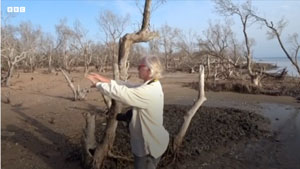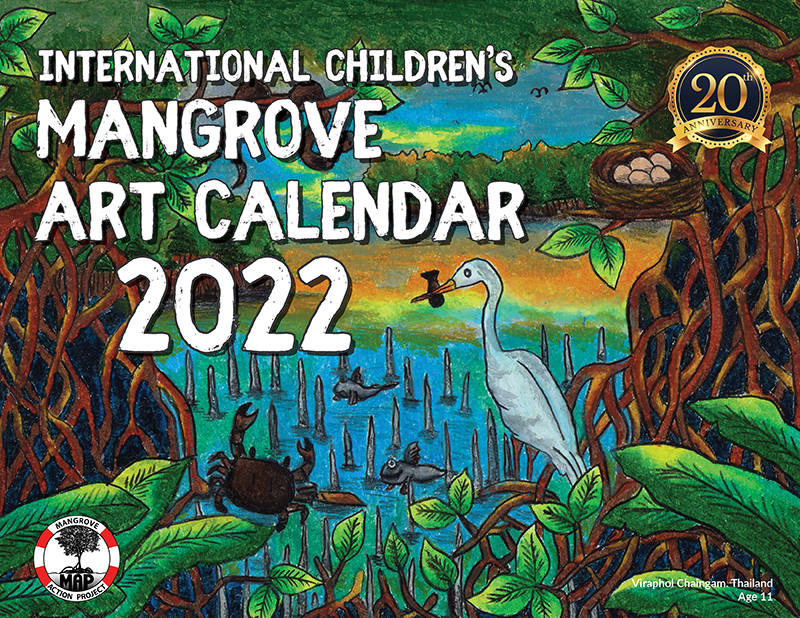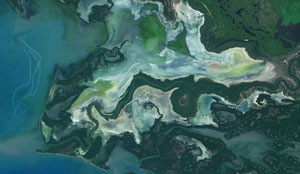MAP News Issue #553 – Aug 27, 2022
MAP Website en Español haga clic aqui
The MAP News | |
FEATURED STORY Aziil Anwar, Indonesian coral-based mangrove grower, dies at 64  INDONESIA – Aziil Anwar, a prolific planter of mangroves on coral damaged by blast fishing in Indonesia’s West Sulawesi province, rallying many children to his cause, died in hospital on May 6. He was 64. Azill had suffered a leg injury from scraping through a coral reef, which failed to heal due to his diabetes. The injury eventually led to his death at Majene General Hospital in Majene, a town on the southern coast of West Sulawesi. Born in 1958 in the town of Ternate in eastern Indonesia’s Maluku Islands, Aziil moved to the island of Sulawesi and started his career in forestry in 1983. Several years later, he and several colleagues were transferred from their posts at the forestry department in Enrekang district, South Sulawesi province, to the farther-flung town of Majene for refusing to participate in what he claimed was a corrupt scheme run by his superiors. Knowing that mangroves of the Rhizophora genus were more adapted to sandy, muddy soil, he changed his planting practice. In a methodology he devised and called his “activator” method, Aziil would bore a hole in the coral with a crowbar, then fill it with soil from the coastline in which he planted a propagule. With foresight, Aziil had prepared his surviving son, his eldest, Firhan Rimbawan, to continue his work. “Papa gave me the name ‘Rimbawan’” — meaning “Forester” — “for me to continue his cause,” Firhan said.READ MORE AFRICA The Mangrove Mothers  KENYA – When Zulfa Hassan goes to work, she carries the seedlings of a future forest. She plants the new trees one by one where a tropical mangrove forest once grew on Kenya’s Pate Island. It’s not hard to imagine that this barren patch of coastal wetland will again be a lush tangle of life. Working while the tide is low, she and the women alongside her handle the tender seedlings with care. They dig holes with bare hands in the saturated soil, spacing the plantings a few feet apart and giving each one the elbow room it needs to start a new life. Most Fridays, the women trade the bustle of village life for the quiet coastal forest nearby. Dressed in brightly colored hijabs, their voices, easy laughter and singing mingle with birdsong. Hassan, an energetic 33-year-old mother of four, is the elected leader of the Mtangawanda Women’s Association, which she helped to establish four years ago to restore mangroves around her community. She has come to be known as Mama Mikoko—“Mother Mangrove” in Swahili.READ MORE $200,000 mangrove seedlings project takes off in Ellembelle DIstrict  GHANA – A $200,000 funded project aimed at raising 200,000 mangrove seedlings to be replanted in degraded sites within the Greater Amanzule Wetland complex in the Western region has kick-started. Dubbed the “AFR100 TerraMatch project,” the project which would raise red mangroves (Rhizophora mangle), white mangroves (Laguncularia racemose) and Black mangroves (Avicennia germinans), is being spearheaded by Hen Mpoano, a Non-Governmental Organisation (NGO) that provides support to coastal communities to promote and sustain integrated management of coastal and marine ecosystems. With funding from the TerraMatch AFR100 fund, the project which began in June, this year and is expected to last for five years would see the planting of the mangrove seedlings in the first two years and monitoring in the remaining three years.READ MORE AMERICAS Mangroves, a Line of Defense Against Climate Change  USA – The Americas are home to 46,284 square kilometers of unparalleled natural wealth that for years has been overlooked and often an underestimated treasure: the mangroves. Panama, Brazil, Colombia, Venezuela, Ecuador, Mexico, Cuba, Costa Rica, Surinam, Dominican Republic, and Guatemala are some of the countries where this vital ecosystem exists, a favorite landscape for thousands of migratory and endemic birds, and a privileged habitat for biodiversity. But the benefits of mangroves go beyond: they are the first line of coastal defense in the fight against climate change, which brings sea level rise, more extreme weather, all of which imposes pressure on many coastal communities in the Americas, forcing them to adapt to maintain their livelihoods. Given the situation, it is essential to protect mangroves, as well as other vital coastal ecosystems: estuaries, mudflats, seagrass beds, and coral reefs, to face and recover from the effects of climate change.READ MORE Fungal succession on the decomposition of three plant species from a Brazilian mangrove  BRAZIL – Leaf decomposition is the primary process in release of nutrients in the dynamic mangrove habitat, supporting the ecosystem food webs. On most environments, fungi are an essential part of this process. However, due to the peculiarities of mangrove forests, this group is currently neglected. Thus, this study tests the hypothesis that fungal communities display a specific succession pattern in different mangrove species and this due to differences in their ecological role. A molecular approach was employed to investigate the dynamics of the fungal community during the decomposition of three common plant species (Rhizophora mangle, Laguncularia racemosa, and Avicennia schaueriana) from a mangrove habitat located at the southeast of Brazil. Plant material was the primary driver of fungi communities, but time also was marginally significant for the process, and evident changes in the fungal community during the decomposition process were observed. The results presented in this work shows a specialization of the fungal community regarding plant material during litter decomposition which might be related to the different chemical composition and rate of degradation. READ MORE The Mystic Mangroves of La Paz  BOLIVIA – When conquistadors first floated into the bay of La Paz in the later part of the 16th century, they noticed the tranquility of the water compared with the harsh seas of the South Pacific. The serene inlet was rich with oysters and marlin, while the desert that sloped around its shores was drenched in heat. The native inhabitants of this sharp landscape were the Indigenous Guaycura people. The barbarous conquistadors attacked them and renamed the places they invaded. After a decade of violence, pillaging the natives and their way of life, Admiral Sebastián Vizcaíno named this bay La Paz, meaning peace in Spanish. Five hundred years after the Spanish conquest, I kayaked through the same waters that were once home to a rich bounty of oysters, which have now been extinct for almost a century. I was here with the nonprofits Blue Turtle Sustainable and Reconciliamar to search for sea turtles in the mangrove forests. Our small crew set off from the south side of the inlet heading toward the mangrove forest. The collection of trees on the other side of the bay looked like a fortress from far away, but the closer we got, the less intimidating it became. The first thing I noticed were the root systems that protruded into the water like giant spider legs reaching into the wet sand. When the tide is low, mangroves’ root systems are fully exposed, giving them a naked and clumsy appearance.READ MORE Vital mangrove forests could be revitalised by ambitious Rotary plans 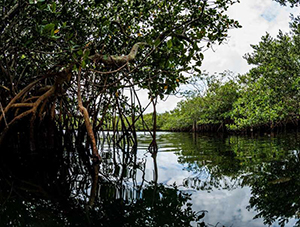 BERMUDA – The island is poised to host a landmark project to revive its vital but fragile mangrove forests with major backing from overseas. Bermuda Rotary Club members said they were confident of securing grant money from Rotary International, which committed last year to join the global fight to restore the coastal woodlands. Mangroves protect shorelines, provide essential habitats for fish and other wildlife, and absorb the greenhouse gas carbon dioxide – but are under threat worldwide. An American conservationist and rotarian took particular interest in the move to save the dwindling mangroves at Hungry Bay in Paget, where the island’s largest mangrove forest is retreating because of climate change, with heavier seas breaking through from coastal erosion. A proposed seawall recently secured Department of Planning approval to protect the trees. Christopher Puttock, who said he worked with mangrove restoration projects across “at least 20 countries”, told a meeting yesterday of the island’s Rotarians: “I don’t see any reason why this project would not be awarded – it’s a matter of getting our proposal together.READ MORE ASIA Tracking the journey of mangroves in southern Japan JAPAN – Mangroves are salt-tolerant trees found in the coastal waters of the tropics and subtropics around the world. Mangrove forests play vital roles for both nature and society. They help protect coastal communities as they provide a natural barrier from tsunamis and storms. In the other direction, they filter pollution and soil runoff. These forests also provide a marine nursery ground as the juveniles of coastal fish can easily hide between the trees. And they have an important role as a carbon sink, thus mitigating climate change. But today, around the world, mangroves are in decline. The forests are often removed to make way for farms and urban developments. To establish which of the remaining forests are the most important to protect, researchers from the Marine Biophysics Unit, led by Prof. Satoshi Mitarai, at the Okinawa Institute of Science and Technology (OIST) have conducted a study on how connected the mangroves are around the subtropical Ryukyu Islands in Japan. READ MORE Sabah to develop 10-year Mangrove Action Plan 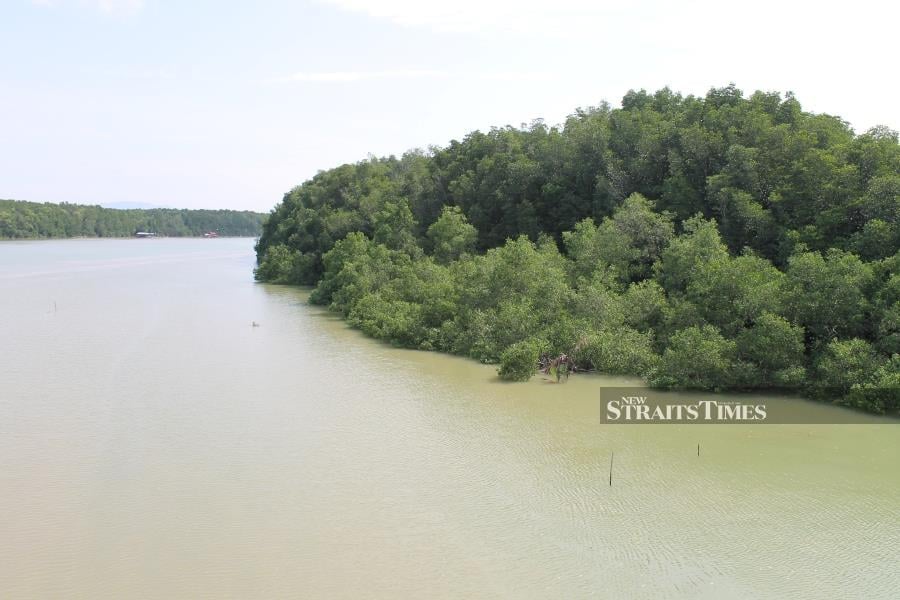 MALAYSIA – Sabah Forestry is moving towards the development of a 10-year Mangrove Action Plan. Its chief conservator Datuk Frederick Kugan said a holistic approach to the protection and management of mangroves will ensure better management of those areas as a whole. “This is why a Sabah Mangrove Action Plan is necessary and the first step to this action plan is the inception workshop that we organised today,” he said in a statement after launching an inception workshop at the Sabah International Convention Centre here. The event, jointly organised with WWF-Malaysia, aimmed to convey the intention to develop the Action Plan to its relevant stakeholders, as well as serve as a platform to create an integrated management of Sabah’s mangroves among the various stakeholders and to strengthen the participation of local communities. It was attended by 51 participants from various sectors including government agencies, local district offices, private corporations, academicians, non-governmental organisations and local communities. WWF-Malaysia Head of Conservation for Sabah Dr Robecca Jumin said the conservation of mangroves is important for both forests and seas.READ MORE Mangroves in the Mekong Delta: growing opportunities or going under?  VIET NAM – The Mekong Delta is home to the largest expanse of mangroves in Viet Nam but is also highly vulnerable to the twin effects of the climate crisis and coastal development, given its proximity to Ho Chi Minh City. The Delta is facing a high risk of much of its area being inundated from rises in sea level. If the level was to rise by 100 cm, nearly 40% of the Delta would be submerged, with around 10% of its population affected by loss of land, intrusion of salt water, droughts, a substantial decrease in the area available for cultivating rice, reduced biodiversity and forests with changes to low-lying ecosystems in and along rivers, and reduced supply of fresh water and water quality, leading to a reduction in GDP of 10%. Mangroves not only play important roles in mitigating, and adapting to, the climate crisis but also provide natural, social, human, financial and physical capital for local livelihoods. However, mangroves in the Delta are facing significant pressures from multiple drivers, such as aquaculture, weak enforcement of policies, lack of financial incentives, urbanisation and poor site selection. Viet Nam has committed to restore mangroves as a key mitigation measure. However, many researchers have warned that restoration of mangroves in the Delta is challenging owing to the challenges mentioned above.READ MORE OCEANA Fiji has third largest mangrove coverage  FIJI – Based on satellite imagery analysis, Fiji has the third largest mangrove coverage in the Pacific, estimated at 43,650 hectares. While opening the Stakeholder Consultation for the Draft Mangrove Conservation Management Regulation and the Environment Impact Assessment (EIA) roundtable last week, Director for Environment Sandeep Kaur Singh said studies revealed mangroves were destroyed at five times greater than average rates of forest loss worldwide. She said the consultation would raise awareness on the importance of mangrove ecosystems and could promote solutions for sustainable management, conservation and usage. “Mangrove ecosystems stand as one of the most versatile and vitally important coastal ecosystems in Fiji,” she said. “They support a rich biodiversity and provide a valuable nursery habitat for marine lives. “Mangroves also act as a form of natural coastal defense against storm surges, tsunamis, rising sea levels and erosion.” She said in recognising the importance of mangrove ecosystems, the Ministry of Environment, through partnership support of WWF, under the Bezos Earth Fund had drafted the Mangrove Conservation Management Regulation for Fiji, under the Environment Management Act 2005.READ MORE VIDEO – Mangrove forests: How 40 million Australian trees died of thirst In 2015, about 10% of Australia’s vast mangrove forests in the Gulf of Carpentaria mysteriously died. Scientists have now figured out the cause – and warn the forests may struggle to recover in a changing climate. Watch Video Pease consider donating to MAP to keep it going. *Articles in this newsletter may mention practices being used and/or show exagerated results being claimed without proof. Stories are presented here in effort to show mangrove related activity around the world and do not necessarily reflect Mangrove Action Project’s views or mangrove restoration best-practices. | ACTION ALERTS Do not sacrifice Congo’s rainforests to the oil industry! TAKE ACTION TAKE MAP SURVEY Please see the survey questionnaire we at MAP put together to discover where the shrimp industry is still having major adverse effects on mangroves and local communities. Stop the Dredging – 6.7 million cubic meters of sand from the Addu atoll basin will destroy nature, biodiversity and the natural defences and resilience of this UNESCO Biosphere Reserve. SIGN THE PETITION Keep fossil fuels out of Bangladesh for the health and wellbeing of the local communities, the beautiful regional beaches and forests, the Bangladeshi economy, and our shared climate. SIGN PETITION Stop this total madness Stop the biggest heated oil pipeline in the world — right through the heart of Africa! Like this newsletter? Pease consider donating to MAP to keep it going. Giving could never be easier MAP Website en Español ARTWORK SUBMISSIONS DEADLINE EXTENDED AUGUST 31st 13 Year old Linda Li “Mangrove Adventure” from Kid Dream Art School
Video: Mangroves for the Future WANT TO GET INVOLVED?
Like this newsletter? Pease consider donating to MAP to keep it going. Giving could never be easier
Interested in connecting or working with MAP? Check out our opportunities here MANGROVE ISSUES Want to learn more about mangroves? What is CBEMR? Download MAP’s 2 page CBEMR Information Sheet containing links to all MAP’s CBEMR resources – CLICK HERE View MAP’s uploaded Videos at Question Your Shrimp Consumer/Markets Campaign! Mangroves: Guidebook to Malaysia – Click Here SHARE MAP’S VISION Our short documentary, Reducing the Risk of Disaster through Nature-Based Solutions : Mangroves NASA Study Maps the Roots of Global Mangrove Loss Marvellous Mangroves Curriculum The Marvellous Mangroves Curriculum begins with a simple philosophy – getting future generations to not only learn about, but understand the importance of mangrove forests. VISIT Marvellous Mangroves Curriculum in Bangladesh – WATCH VIDEO
Like this newsletter? Pease consider donating to MAP to keep it going. Giving could never be easier
“Question Your Shrimp” Campaign Question Your Shrimp – is it really sustainable? Sign the Petition Note to Our Readers: We strive to keep active links in our newsletter. However, due to circumstances beyond our control, occasionally links to stories may become broken. If you find a link to a story is not functioning, please cut and paste the headline into your browser search bar. In most cases you should be able to locate the original story. Not yet a MAP News subscriber?
|
Mangrove Action Project Click here to view past newsletters
| |

